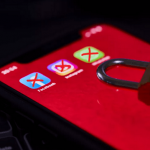By Rosie Spinks
If there is one piece of professional advice that is wildly underestimated in its impact, it is the power of the follow-up email.
When I was a full-time reporter, I saw the power of this from both sides of the inbox over and over again.
I can’t count the amount of times a dream interview or ambitious pitch would have never come to fruition if I had not followed up on it judiciously. When I was in the freelance pitching game, I kept a spreadsheet with the dates of my initial pitch to an editor, and would tick off one week later when it was time to follow-up. If I got no response within a few days, I’d confidently move onto the next editor and the cycle would begin anew.
Equally, I can’t tell you how many times I received a tip or story idea from a source or PR I maybe wanted to write about, but didn’t have time to answer it in that moment. Then, how grateful I would be to receive a follow-up when I was less busy which prompted me to respond—rather than lose it to the morass of my inbox.
Now, of course, there are many ways to get the art of the follow-up wrong. You can use it too much, in which case you become annoying and may even provoke a curt reaction. (Like me to every PR to emails me more than twice about a story idea: “Please remove me from your list.”)
You can send an email with even more info, context, and words than your first one, thereby giving the recipient even more work to do to parse out your initial ask. Or you can be following up on an initial ask that is completely unreasonable or entitled. In which case your follow-up email ‘aint gonna help your case.
So, some general rules of thumb:
If your email is one of cold outreach — meaning you have not previously corresponded with this person, or they did not in any way ask to be contacted by you—then you only get one single follow-up. You can send it at minimum a week later if it’s a time-pressed issue, but if it’s a bigger ask it might be wise to send it a few weeks or a month later. I usually stick with somewhere in the one to two week range.
If, on the other hand, the recipient had previously agreed to something and then gone quiet, or this person knows who you are in real or online life, and perhaps they are just tremendously busy and in-demand, then two or even three follow-ups may be necessary, over a month or two period. But these cases are rarer (especially three attempts) and should be treated with caution.
Next, the follow-up should be one or two lines maximum, in the same thread as your prior email, and it should not pressure the person to respond or read as expectant. Something as simple as: “Hi [person], I appreciate you probably get loads of requests, just following up on my note below once for good measure. Thanks for your consideration.” It’s a gentle ping rather than a loud knock at the door.
Remember, there is a not-insignificant chance this person read your email the first time and wanted to respond but, you know, life happened. This will give them some impetus to do so now. If they read your email the first time and had no intention of ever responding, they now know that they won’t be receiving another email from you. They will respect you more for bowing out of the exchange with dignity.
Lastly and perhaps more importantly, ask yourself if your ask is reasonable. Never, ever ask to “pick someone’s brain.” (Unless, of course, you’re willing to pay for it, or have given this person some kind of labour-for-free favour in the past.) Lay out your request or ask clearly: How much of their time it will take. What you will be providing in exchange. Essentially, what’s in it for them. In general, if you repeatedly get no response from people, you may need to consider that you’re asking for way too much.
If you’re a young professional or student starting out and asking for advice, ask 2–3 specific questions—rather than “I wondered if you could tell me how to succeed in your industry?” This question is both uninspiring and time consuming to answer.
The beauty of the follow-up email is the clarity it provides. You either get a response, or you don’t, and both situations allow you to move on with your life.
If you get no response, you can rest easy knowing you tried and move forward without the uncertainty of wondering if your initial email got lost in the ether. It limits the resentment you might feel, and is a sign of respect to yourself, too. Two unanswered emails most likely means this: This person is just not that into you or your request. That’s okay. Go find someone else who is!
If you do get a response, then, woohoo! You’ve showed yourself as a diligent, polite, and on-top-of-it person who follows up on emails. You’ve also built a little more confidence that your ideas or instincts are good, and that sometimes the difference between a No and a Yes simply a follow-up email. You’ll never forget it.
Feature Image Credit: Simple Superpower of a Follow-Up Email





